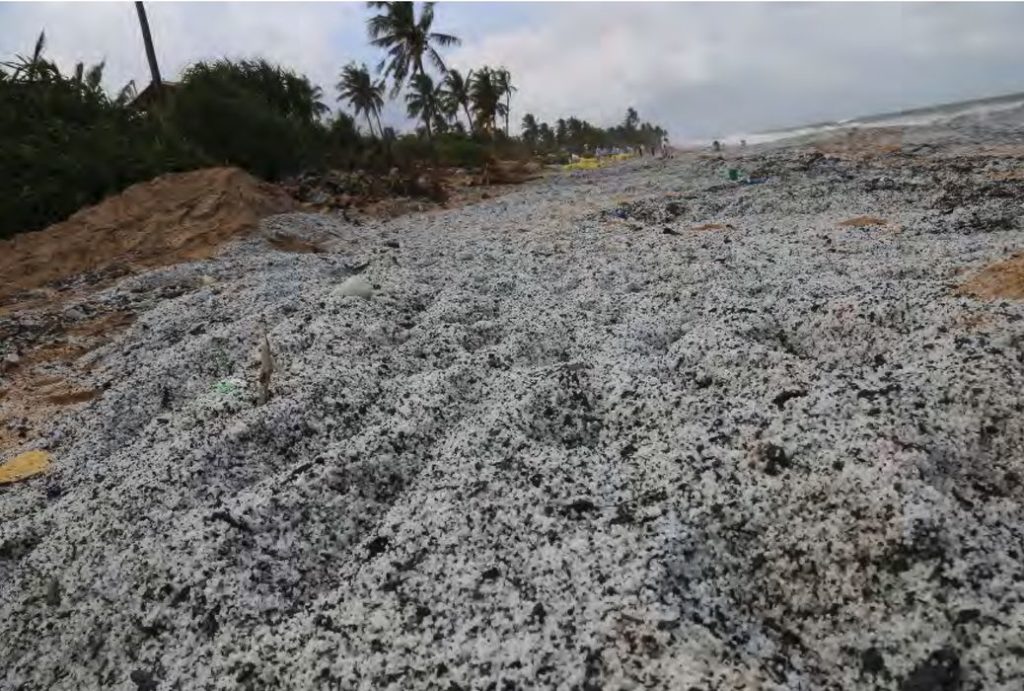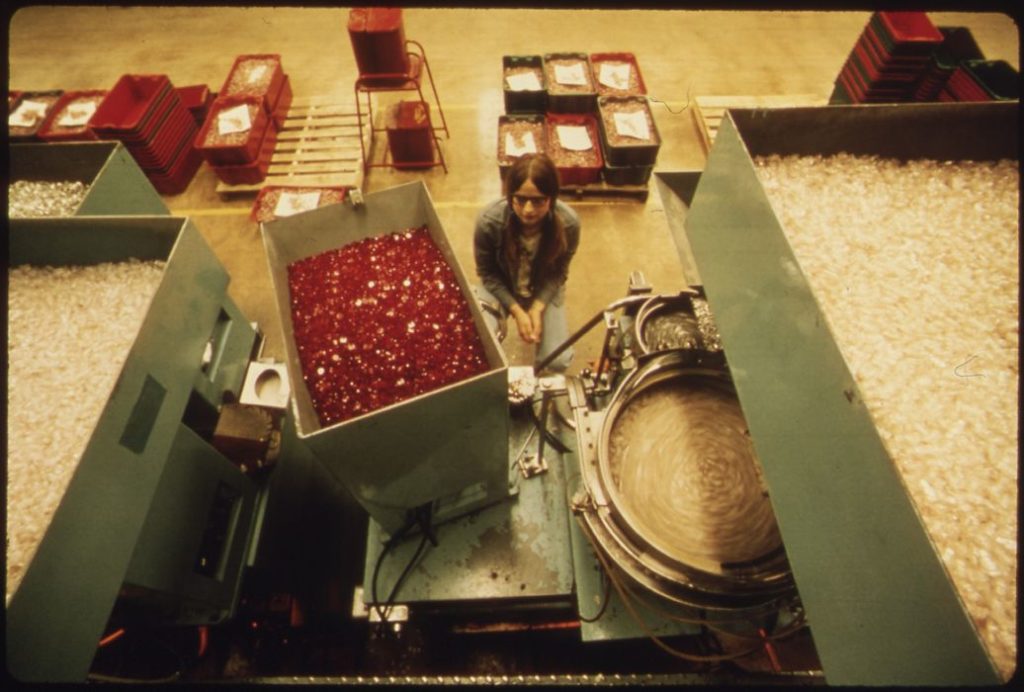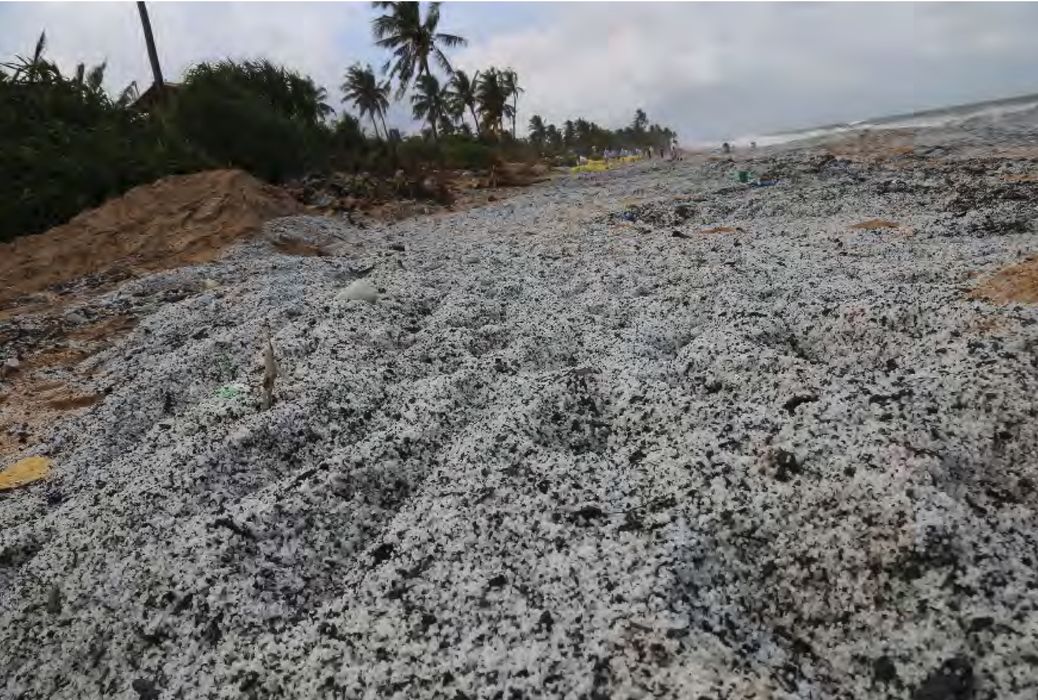
Do you know what a nurdle is?
I hadn’t heard the term previously until I read a story on the Guardian describing a terrible environmental disaster in Sri Lanka, where kilometers of beaches have been spoiled by billions of nurdles.
Hold on, what exactly is a “nurdle”?
It’s the industry term for a pre-production plastic pellet. Typically nurdles are around a half a centimeter in size, and are made of thermoplastic materials, such as polypropylene, polyethylene, polystyrene, polyvinyl chloride and others.
Nurdles are the basic form of thermoplastic from which all other thermoplastic parts and products are made. Conventional usage might be to melt a handful of nurdles in an injection molding system to squirt into a metal mold. Another application could be to melt nurdles and pour into molds to form shapes after the material cools. It’s even possible to extrude softened nurdles into materials like fishing line or welding wire.
And, as you have probably guessed, 3D printer filament.
Filament is simply an extrusion of standard diameter of a thermoplastic, collected on a spool. It’s created by pouring the better part of a pallet of nurdles into an input hopper, where a screw forces them down into a hot melting zone. Also tossed in the hopper will be coloring agents called a “master batch” in a specific amount to ensure a specific color emerges. From there, the pressure pushes the molten material through a nozzle to form a filament.

By adjusting the speed of the screw the pressure can be adjusted, and the extrusion nozzle diameter can also be changed. Through careful tuning this extrusion system can be persuaded to put out 3D printable filament in a consistent diameter.
There’s lots more to the story, as there are issues of humidity, cooling time, take-up spools, etc., but you get the idea: your filament is made from nurdles!
Nurdles are produced by chemical companies that combine the raw materials in complex processes to form the desired thermoplastics. Then nurdles are created and shipped to manufacturers, which convert the nurdles into products of various types. They use equipment that mostly assumes the input is in nurdle form.
The Sri Lankan incident, however, points to the dangers of nurdles — even with a cute name, they can be quite dangerous.
A ship, the X-Press Pearl, carrying vast quantities of nurdles, caught fire as it was anchored off the port of Colombo in Sri Lanka. The fires caused explosions, which resulted in countless shipping containers to fall off the ship into the ocean. These containers broke up, releasing their contents.
While there were no casualties from the incident, which took place in May 2021, there was considerable environmental damage. Smoke from fires extended inland, 25t of nitric acid was released, oil fuels continuously leaked and larger quantities of nurdles washed up on beaches for hundreds of kilometers.
The incident was said to be the worst environmental disaster in the history of Sri Lanka, and even generated a long report from the United Nations.
The report concluded that 87 containers of nurdles holding an astounding 1,680 tonnes of thermoplastics fell overboard.
Due to the similarity in density to water of the thermoplastics, they easily were moved around by the motion of the sea and quickly embedded themselves on shores, beaches, sand and underwater (see image at top). Apparently the nurdles were up to two meters deep on specific beaches in the area. The UN report said:
“At the time of writing, the geographic bounding of the incident remains unknown givens its
developing nature. A substantial proportion of the plastic pellet pollution will remain
mobilized in the ocean for decades and will take many years to recover which may never be fully possible. Indeed, modeling studies suggest that the pellets will make landfall across Indian Ocean coastlines from Indonesia and Malaysia to Somalia, further highlighting the potential transboundary impacts of the event.”
Note: Indonesia is near Australia, and Somalia is in AFRICA!
According to the Guardian, some of the nurdles in the containers were stored not in proper pallets, but instead stored improperly in loose polyethylene bags. These easily broke up during the incident, releasing their nurdles to the sea.
While many tonnes of material has been removed through cleanup efforts, there will be nurdles remaining in the environment basically forever. They are deeply mixed into the sands and cannot be easily removed. These will be encountered not only by humans, but by nearby wildlife that might consume the thermoplastics.
In other words, it’s a complete disaster.
Were those nurdles destined to become 3D printer filament? Possibly.
Think about this: every time you use a 3D printer filament, its origin nurdles may have experienced a similar but less disastrous journey.
While we must continue to use filaments, we can all be careful with the results of our printing activities. Dispose of them wisely.
Via The Guardian and UNEP (PDF)

